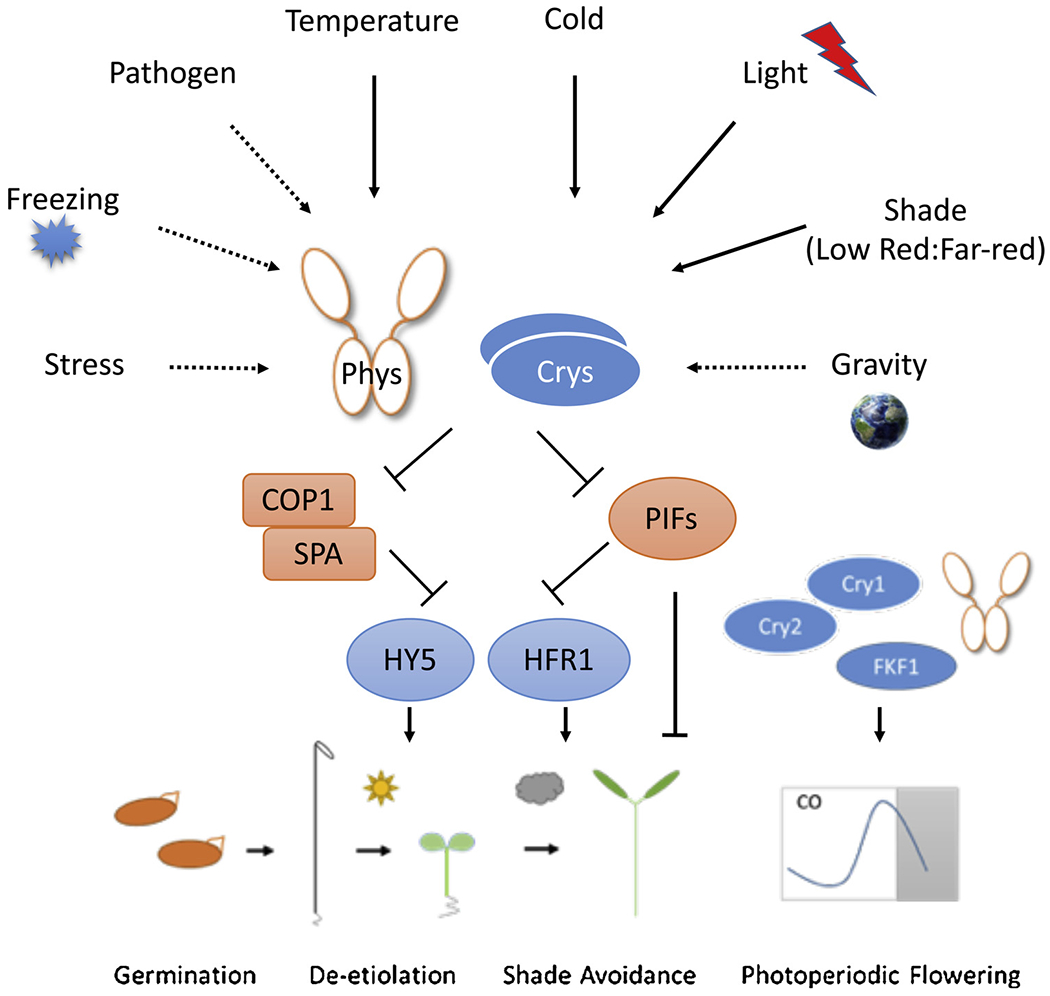Fig. 2.

Convergence of multiple environmental cues on photoreceptors.
Phytochromes directly perceive ambient light as well as temperature information. Through co-ordination between photoreceptors, they can modulate myriad of plants’ responses including biotic and abiotic stress responses, gravitropism, as well as multiple developmental transitions. At molecular level, photoreceptors share some of the critical signaling components such as E3 ligase COP1-SPA complex as well as transcription factors called PIFs (PHYTOCHROME INTERACTINF FACTORS), HY5, and HFR1. By inactivating negative regulators of light signaling, COP1-SPA and PIFs, photoreceptors can initiate massive gene expression changes in response to light signal. Photoreceptors also stabilize master transcription factors such as HY5 and HFR1 to target a large number of genes in Arabidopsis genome. These photoreceptor-mediated regulations eventually lead to optimized growth and fitness of plants resulting in enhanced grain and biomass yield in agriculture.
